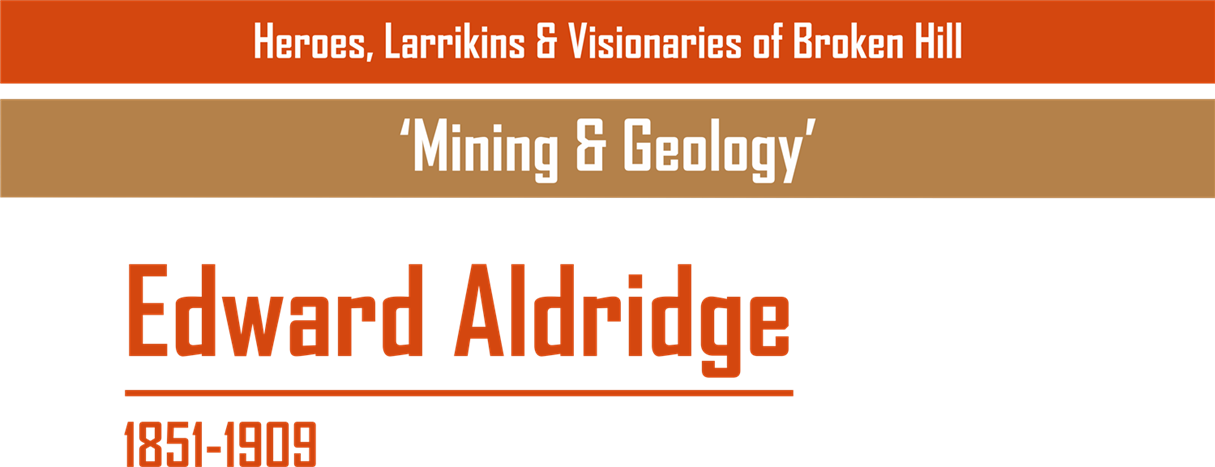Edward Aldridge

With no specialist knowledge of minerals or mining, Edward Aldridge became one of Broken Hill’s best-known and most successful mineral collectors.
A publican by trade, Aldridge came to live in Broken Hill in the mid 1880s and established Aldridge’s Grand Hotel in 1888 on the corner of Argent and Chloride Streets. He started collecting minerals from Broken Hill miners at around the same time, but the Grand Hotel with its wealthy clientele was not the kind of pub miners drank at, so Aldridge sold the Grand in 1889 to buy the Duke of Cornwall on Argent Street.
In the late 1800s the Broken Hill orebody was being mined by newly established companies that included the Broken Hill Proprietary Co. (BHP). Miners would go to the Duke straight from the diggings with small collections of minerals and crystals they’d found underground and souvenired. The ore body in the central lode of Broken Hill, which was being mined at that time, was rich with lead, copper, silver and zinc, and many other minerals that glittered in the underground passages where the miners spent long hours.
Aldridge’s fascination grew and so did his mineral collection. He established a trading system at the Duke of Cornwall: mineral specimens for beer. Popular legend has it that he would empty the miner’s pails of minerals and fill the same pail with beer. By all accounts he had a sharp wit that leaned towards sarcasm, and an endless supply of satirical humour. ‘Teddy’ went through life with an ease that made his presence felt in whatever company he happened to be keeping. His famous talent for satire was indiscriminate: aimed at friend and foe alike. Few people were brave enought to risk a wordy encounter with Teddy.
By 1902, he had opened Aldridge’s Garden to the Broken Hill public, in which he also collected a small menagerie of animals including snakes and monkeys. It seems the public gardens became a liability when five of his snakes were stolen and one of his monkeys poisoned. This outdoor feature of the Duke of Cornwall closed for a time before being reopened in 1908 as the museum gardens and zoo. The museum, formerly one of the balcony rooms in the hotel, contained the growing E.W.Aldridge mineral collection in bespoke glass and wood cabinets.
Aldridge died after a short illness in Adelaide July 1909, but during his lifetime he amassed a collection of nearly 5000 minerals, including crystallised anglesite, azurite, cerussite, chlorargyrite, malachite, smithsonite and stolzite.
In 1912, Sir Hugh Dixon purchased most of the Edward W. Aldridge Broken Hill mineral collection for 7500 pounds (approximately $150000 in today’s currency) for Sydney University. Current records indicate that the Australian Museum received 125 mineral specimens, the Mining Museum (formerly Earth Exchange Museum) received 19 specimens, the Technological Museum (now the Powerhouse Museum) 92 specimens and the NSW Government 508 specimens for exhibition. The latter collection appear to have been sent to London and now form part of the British Museum of Natural History’s mineral collection.
Audio transcript available.